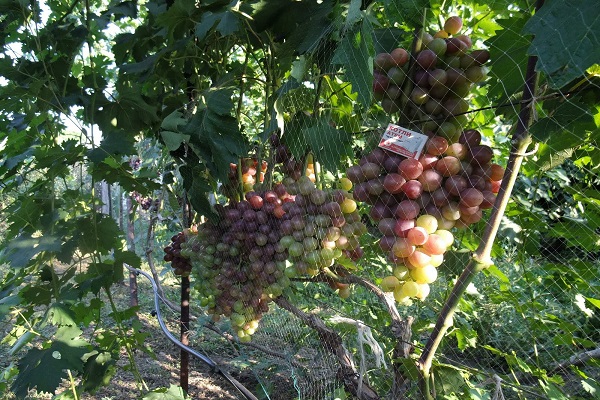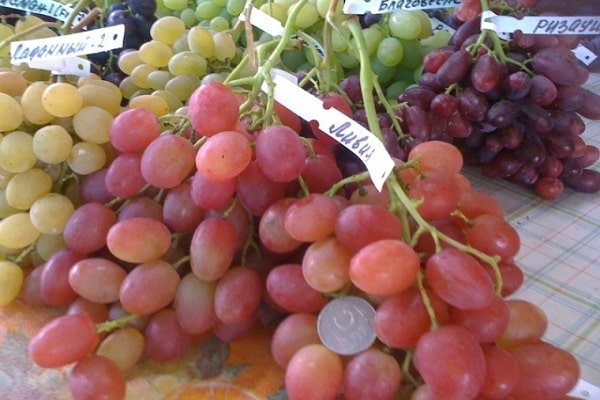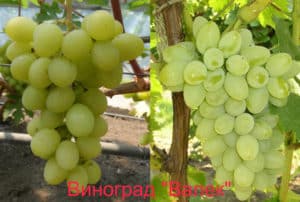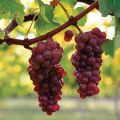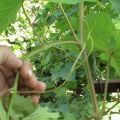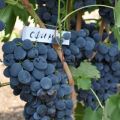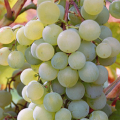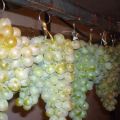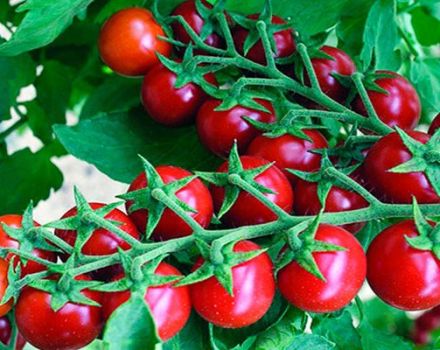Description of the grape variety Libya, ripening dates and features of cultivation and reproduction
The Libya variety has won the hearts of grape lovers with its delicate taste and light aroma. The new variety is suitable for any use and cooking, except for winemaking. It belongs to table varieties, from which jams, preserves, juices, compotes, and raisins are made.
Breeding history
The famous Ukrainian national breeder V.V. Zagorulko bred the Libya grape variety, which has good qualities and the ability to grow even in cold regions. By crossing the parental plants of the Arcadia and Flamingo grapes, the Libya variety was obtained. The variety was bred over 10 years ago, but entered the register in 2011. Some gardeners call the cultivar "sweet" because of its taste. In Russia, it has become widespread since 2014, when it was entered in the State Register.

Description of the variety
Livia took a beautiful color from Flamingo, and from Arcadia the taste and shape of the brushes.
Description of the brush and berries of Libya:
- Cone-cylindrical, large from 0.6 kg to 1 kg, dense, long up to 40 cm, with large berries from 8 to 17 g.
- In a sunny place, the growing grapes produce fruits of a bright pink color, in the shade - light pink, can be round or oval.
- Sugar accumulation up to 25%.
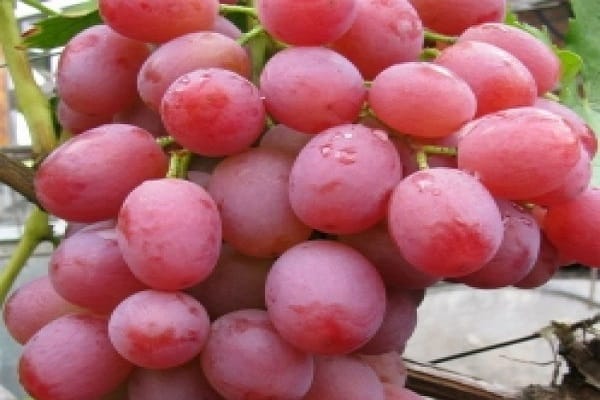
Description of the shape of the bushes and roots:
- Saplings quickly take root and adapt to new conditions.
- The bushes are tall, with strong vines.
- The root system is powerful and recovers well.
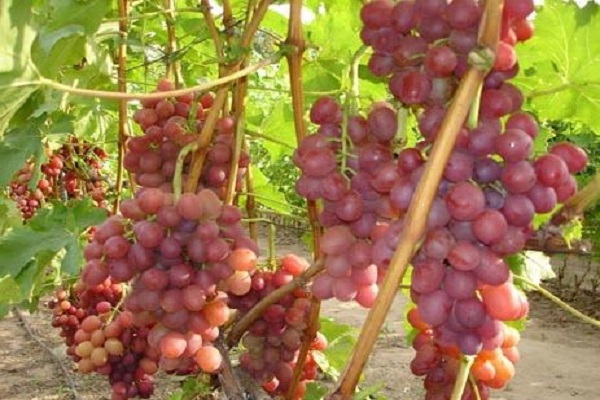
Distinctive characteristics
The grapes were developed in the Zaporozhye region and quickly began to spread throughout it and the surrounding areas. This variety is distinguished by its unpretentiousness and the ability even for an inexperienced summer resident to get a bountiful harvest with a minimum of effort. The characteristics of the variety include:
- Self-pollination
- High productivity.
- Requires grape rationing.
- Frost resistance down to –21 ° C.
- The preservation of the crop in its normal presentation up to 1 month.
- It tolerates transportation well, does not wrinkle.
- Resistant to some fungal diseases.
- Stable harvest.
The grapes have a sweet taste with a slight sourness, a delicate, fresh aroma. Emits a crunch when cut.
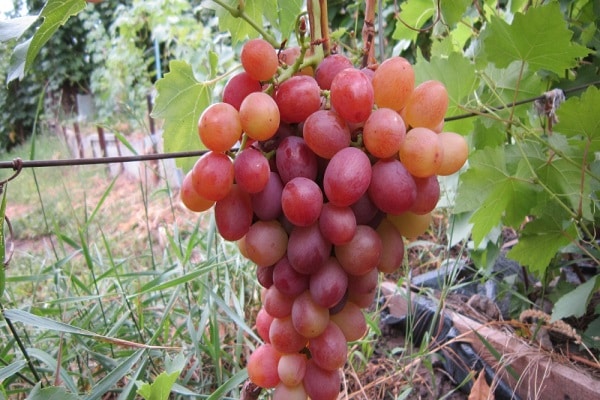
Advantages and disadvantages
| Benefits | disadvantages |
| High yield | Weakly resistant to mildew and oidium |
| Early maturity, early | Attracts with the taste of wasps, birds |
| Long shelf life, transportability | Low frost resistance down to -21 ° C |
| Very sweet variety | The coloring of berries on the brush is uneven |
| Grows in the shade and sun | |
| High yield per bush up to 30 kg | |
| The skin is delicate, thin | |
| Annual vines ripen until autumn |
Landing rules
Correct planting guarantees quick adaptation of the plant. A seedling hole is dug 0.5 m deep, 0.6 wide:
- Prepare a pit, on the bottom of which lay a drainage layer 10-15 cm.
- Put rotted manure or chicken droppings on the drain.
- Water vigorously, but so that there is no stagnation of water.
- Plant a seedling and sprinkle with a loose soil mixture of sand, peat and earth.
Around the bush, leave a depression about 0.5-0.6 m in diameter and make a groove from it for the drain of excess water.
Before planting, the roots of the seedling must be inspected, soaked in a manganese solution for disinfection.

Care and growing tips
It is very important to ration the harvest so that young vines can mature before autumn. It requires a little shade, especially in hot, dry weather. The most favorable place for growth is the southern side of the site with a small slope. The grapes have great vigor and therefore require strong supports.
The most important care for the bush is pruning, carried out in the spring and autumn for 2-6 eyes. The best option for a plant is to form 4 arms. Fertilizing the plant is very important, especially during the ripening period of the berries, more potassium should be added. The ripening period of berries is from 90 to 105 days.
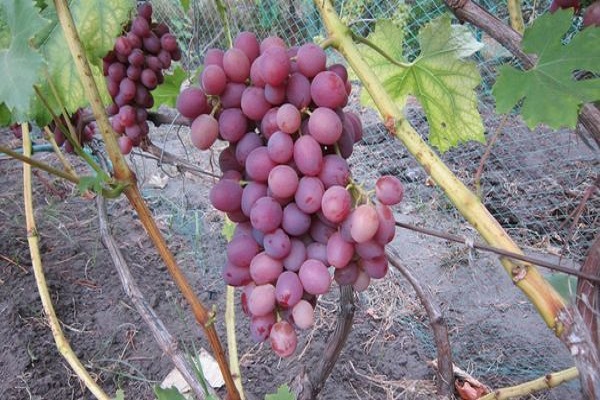
For the winter, the vines and roots need to be covered, since if there are strong temperature drops or more than -21 ° C, the plant will die.
Watering should be carried out during the flowering period, after it 1-2 months, 2 times each and after harvesting, as well as in very dry weather with strong winds. Water a young seedling with 1-2 buckets under a one-year-old bush, in the evening or in the morning.

Breeding features
The bush is propagated in 4 ways:
- Seeds.
- Taps.
- Vaccination, which is carried out in the spring.
- Cuttings.
Bends and cuttings are added dropwise after harvest, in autumn. Cuttings are treated with a disinfectant, dried from it, wrapped in burlap and put away in a cold, dark place.
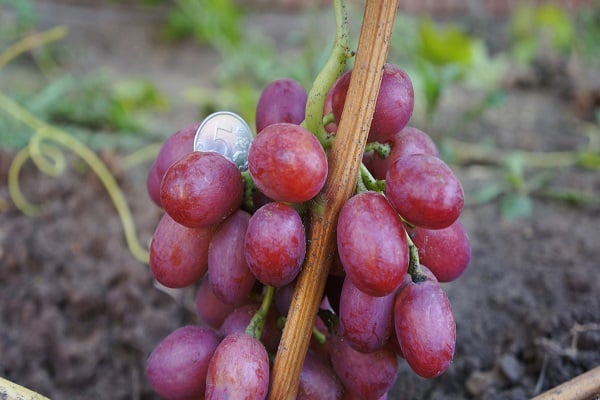
About diseases and pests
Libya is not resistant to fungal diseases and pests, therefore preventive spraying in the spring is mandatory for it. Most often, they appear on it in adverse weather conditions:
- Mildew.
- Oidium.
- Anthracnose.
- Gray, root rot.
- Chlorosis.
- Wasps.
- Ticks.
- Aphid.
- Birds.

To make the bushes more resistant to diseases, they are fed in early spring and during the ripening period of berries with complex fertilizers. Cover wasps and birds with a net or gauze.
The best place for growing Libya is the North Caucasus region and other areas with a warm climate.
